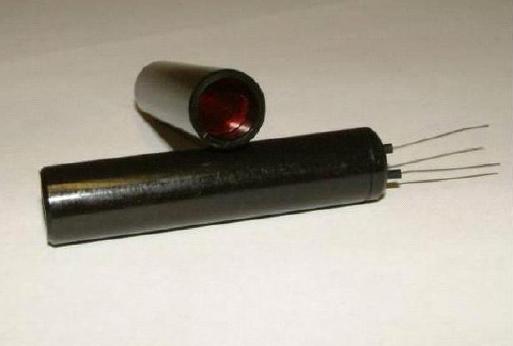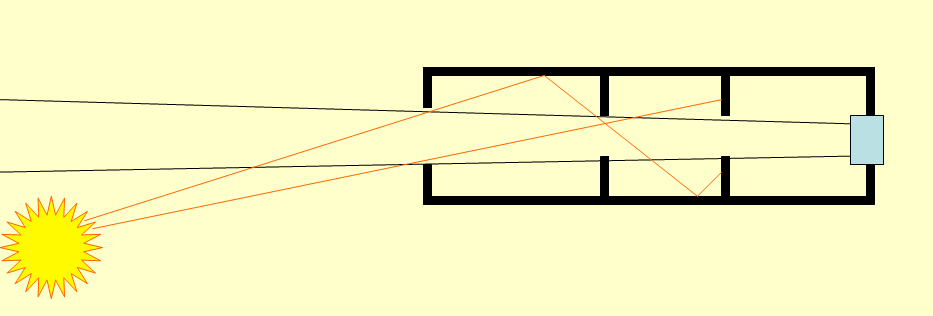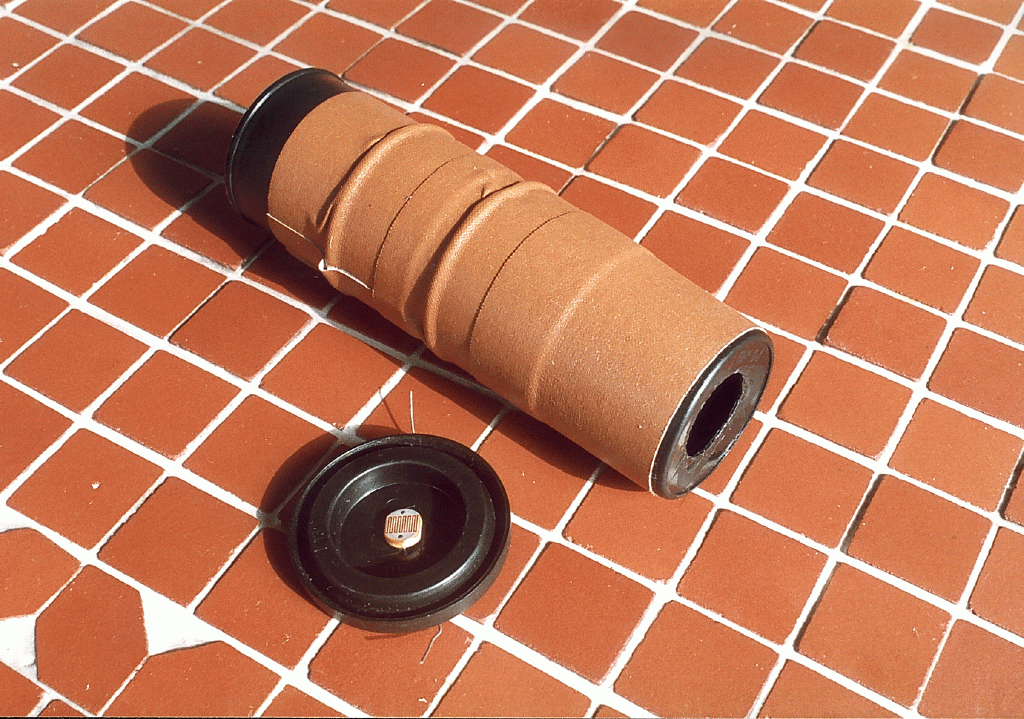How to build a simple Photometer
Joachim Köppen Strasbourg March 2010
A photometer is an instrument to measure the intensity of light. As discussed
here one can use several different electronic
components to do this. Light dependent resistors (LDR, photoresistor) can be
used to measure quantatively the intensity and the colour of visible light,
as their spectral sensitivity peaks somewhere in the green region, where also
the human eye is most sensitive. They are cheap and readily available at various
resistance values, and only need the use of an ohmmeter, e.g. an inexpensive
digital multimeter. A few example are shown below, on the left hand side.
 Light falling on the device's front surface from any direction will cause its
resistance to become smaller. If one wants to measure the light intensity from
a certain direction, such as an illumination source rather than the ambient light,
it is best to put the photoresistor in a small housing with an opening, or a small
tube of opaque material, which lets light come in only from a small angle. Below are
shown 5 cm long plastic tubes which permitted to measure the light from an angle
of about 5 to 10 degrees, which was needed to measure the blueness of the sky in
an experiment carried up by a sounding rocket:
Light falling on the device's front surface from any direction will cause its
resistance to become smaller. If one wants to measure the light intensity from
a certain direction, such as an illumination source rather than the ambient light,
it is best to put the photoresistor in a small housing with an opening, or a small
tube of opaque material, which lets light come in only from a small angle. Below are
shown 5 cm long plastic tubes which permitted to measure the light from an angle
of about 5 to 10 degrees, which was needed to measure the blueness of the sky in
an experiment carried up by a sounding rocket:
 This collimating tube can also be constructed from black cardboard. One best uses
a material which is not shiny, because otherwise there will be reflections on the
inner surface which would compromise the purpose of the tube to restrict the
field of view for the photoresistor. To prevent these reflections, one can use
baffles, which are apertures in the tube itself, as shown below.
This collimating tube can also be constructed from black cardboard. One best uses
a material which is not shiny, because otherwise there will be reflections on the
inner surface which would compromise the purpose of the tube to restrict the
field of view for the photoresistor. To prevent these reflections, one can use
baffles, which are apertures in the tube itself, as shown below.
 While it would be a bit complicate to fabricate disks with holes of suitable
size and insert them in the tube, we can use plastic film canisters put into
each other to form the detectos tube. In each bottom of the canister we cut
a round hole, stick each canister into the next one. Two or three canisters
make a nice collimating tube giving a well-defined field of view:
While it would be a bit complicate to fabricate disks with holes of suitable
size and insert them in the tube, we can use plastic film canisters put into
each other to form the detectos tube. In each bottom of the canister we cut
a round hole, stick each canister into the next one. Two or three canisters
make a nice collimating tube giving a well-defined field of view:
 Glue or sticky tape holds the canisters together, and a lid holds
the photoresistor.
Glue or sticky tape holds the canisters together, and a lid holds
the photoresistor.
The resistance of the semiconductor material in a photoresistor decreases with
the intensity in a non-linear fashion, which is close to a power law:
(I/I0) = (R/R0)^(-gamma)
where R0 is the resistance at the intensity I0. The constant
gamma is given in the data sheet of the device, and is usually around
0.6 ... 0.8.
To make measurements, the device thus needs to be
calibrated. But even without this, one may
compare measurements by simply taking the ratio of the resistance values.
If we use different colour filters ahead of the photometer tube, or even
put two photometers with different colour filters side-by-side, we can
measure colours.
| Top of the Page
| Back to the MainPage
| to my HomePage
|
last update: March 2010 J.Köppen




